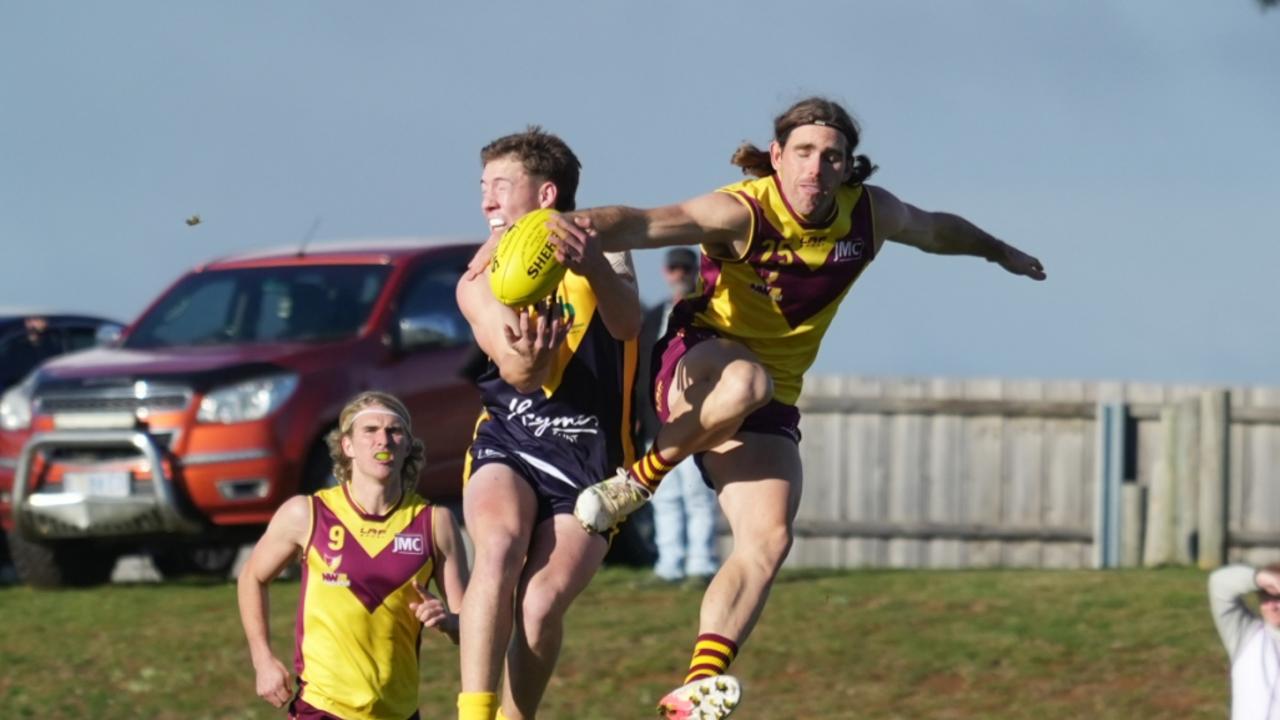‘Safety must be paramount’: Clarence Plains Master Plan
Community consultation reveals more than half of Clarence Plains residents feel unsafe in their own neighbourhood but the council has promised ‘action and change’.
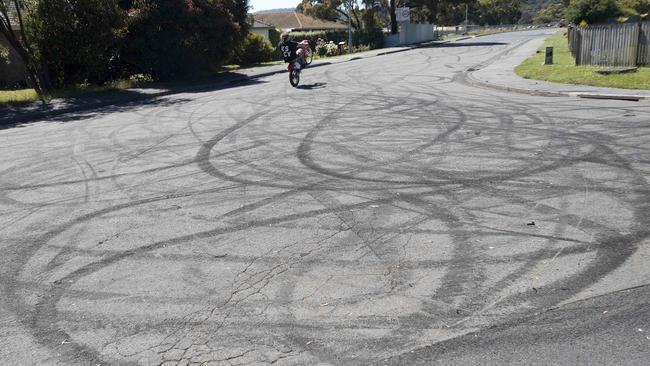
News
Don't miss out on the headlines from News. Followed categories will be added to My News.
CLARENCE City Council has unveiled its plan to stamp out hooning and improve safety in Clarendon Vale following a slew of complains from the local community.
It comes after The Mercury revealed Clarence was the state’s worst spot for hooning between July 2021 and June 2022, which left residents feeling unsafe and afraid to report anti-social behaviour to police.
The council has been working closely with key stakeholders, including Tasmania Police and the state government, to address hoon driving behaviour and improve community safety across the Clarence Plains area as part of its proposed Master Plan.
The plan would see the consolidation of community hubs, the improvement of recreational and youth spaces, and an increase in public safety by upgrading roads and street lighting.
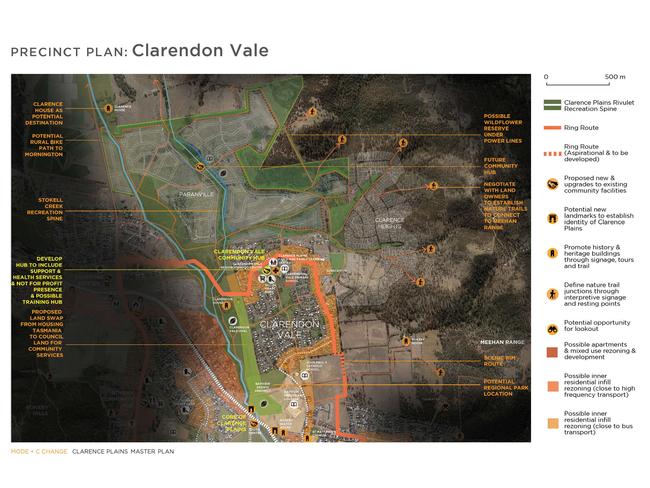
The council surveyed 281 Clarence Plains residents as part of its “consolidation phase” for the plan, which found more than half of respondents did not feel “safe or comfortable” in the area.
More than a quarter of Clarendon Vale residents surveyed said they did not feel safe walking in public and were especially concerned about hooning and crime.
Residents called for improved surveillance and a stronger police presence, better street and public lighting, and upgraded footpaths and facilities to increase community safety.
The council has agreed “safety must be paramount throughout the Master Plan, and initiatives must be cognisant of producing beneficial outcomes in all areas”.
This includes reducing hooning and trail bike use, improving safety for cyclists, road uses and pedestrians, and putting a stop to arson activity in the area.
The council has also been collaborating with police and local organisation One Community Together on a trail bike working group, which has rolled out important safety and education programs for bike users.

Clarence City Mayor Brendan Blomeley said the council was working “on the ground” to deliver “action and change” for the community.
“That’s what our Clarence Plains Master Plan is focused on. It’s a plan that was developed in collaboration with the community, that responds to what they say they need in their local neighbourhoods.” Mr Blomeley said.

“We don’t back away from the fact that, just like any other community, there are a some spoiling it for everyone. These individuals should be dealt with by the appropriate authorities in the strongest way possible but they should not represent what this area of our city really is – a place of resilience, ingenuity and hope.
“We continue to work with Tasmania Police and community groups on addressing this issue.”
The council is expected to endorse a final Clarence Plains Master Plan early next year.
REVEALED: Top ten worst hooning spots in Tasmania
AUTHORITIES have promised to crack down on Tasmania’s suburban hooning problem amid complaints from concerned community members.
It comes after The Mercury revealed Clarendon Vale’s shocking hoon culture, which has left residents afraid to report hoon behaviour for fear of intimidation tactics and retaliation.
Infrastructure and Transport Minister Michael Ferguson said the government took hooning “very seriously”.
“There can be no tolerance for this hooning. Not only is it putting the driver’s life and their passengers lives at risk … it’s the innocent bystanders and other vehicle users who are put at risk by this hooning behaviour,” Mr Ferguson said.
“Police are going to be targeting some of these areas and we’re very grateful for the feedback from the community that allows … for greater enforcement, including through the use of our new cameras.
“We certainly have a comprehensive approach to doing everything that governments can do around road safety.”
Assistant Police Commissioner Adrian Bodnar said they were committed to investigating and prosecuting reckless drivers.
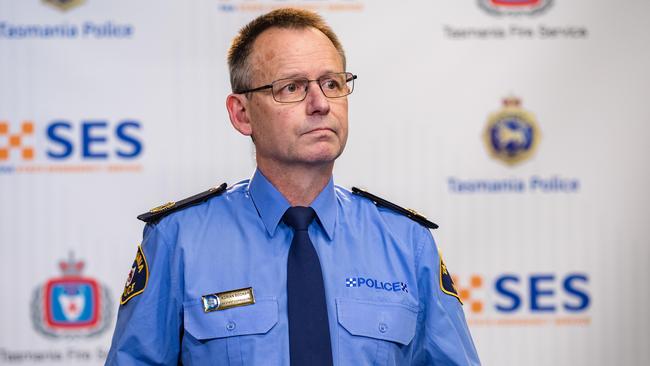
“I know there’s a number of inquiries underway at the moment and that’s designed around two things – the first one is to endeavour to identify those offenders who were responsible for a number of traffic related offences and, secondly, it’s about gathering sufficient admissible evidence to be able to charge and prosecute and put them before the court,” Mr Bodnar said.
The Mercury has been flooded with complaints from concerned community members about hooning in their local areas.
One commenter suggested the installation of speed humps on suburban roads to deter drivers from speeding, while others called for security cameras and a stronger police presence in known hooning areas.
Commenters also pointed to other dangerous hooning hot spots in their local communities, including Launceston and the Huon Valley.
Launceston had the fourth highest number of police hooning incidents between July 2021 and June 2022, trailing behind Bridgewater and Glenorchy, according to Tasmania Police.
Clarence – the local government area where Clarendon Vale is located – was the worst spot for hooning in the same time period.
Tasmania Police confirmed it used a range of methods to address dangerous and hoon driving across the state, including drones, undercover cars, motorbikes and trail bikes, and visible patrol vehicles.
A police spokeswoman said cars caught hooning can be impounded and clamped for around 28 days, but this could be extended to 12 months for a subsequent offence.
Police divisions with the highest number of reported hooning incidents between 1 July 2021 and 30 June 2022:
1. Clarence
2. Bridgewater
3. Glenorchy
4. Launceston
5. Burnie
6. Kingston
7. Devonport
8. Central West
9. East Coast
10. North-East
Clarendon Vale hooning spot can be seen from space
IT’S one of the fastest growing areas in southern Tasmania, but it’s also one of the state’s most notorious hooning hot spots.
For years, groups of mainly young men have recklessly burned down the quiet streets of Clarendon Vale in unregistered cars and noisy trail bikes with little regard for their neighbours.
Footage obtained by The Mercury shows one car revving dangerously and performing burnouts with smoke billowing from the tyres while groups of cheering young men spur the driver on.
A separate image depicts another vehicle on fire, left to burn out on the side of the road.
The damage to the road can even be seen from space, with heavy burnout marks on Bradman St – one of the worst spots for hooning in the area – clearly visible on a Google Maps satellite image.
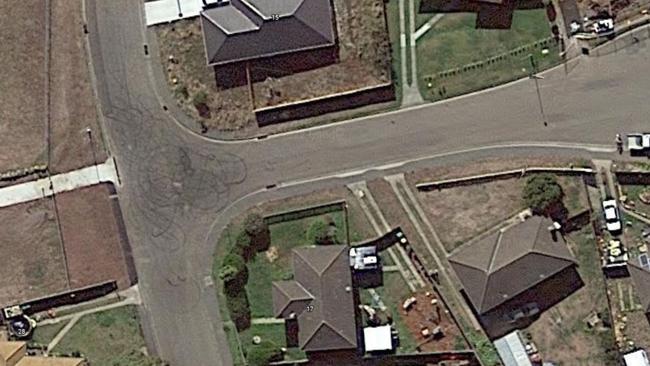
The Mercury can reveal disgruntled residents have been too scared to complain or report the hoonsters to police, fearing retaliation from the perpetrators.
Clarendon Vale resident Jane*, speaking to The Mercury on the condition of anonymity, said while hooning has been common in the area for years, it has increased dramatically in recent months.
She recalled one incident where a group of hoons revved their cars with deafening volume on Mockridge St – near the local Neighbourhood Community House, early learning centre and primary school – around 5.30 in the morning.
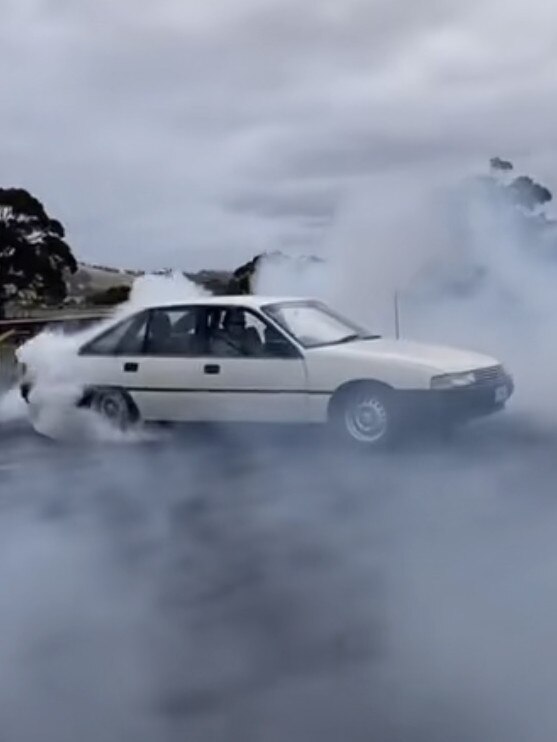
Another time “they spun the tyres until they exploded”, leaving wire and rubber strewn across the road.
“When you’re doing that sort of stuff on a school night …(it’s a) lack of consideration for everybody,” Jane said.
“You’d think they’re doing Bathurst laps up and down Mockridge and they do that quite a bit.
“That noise is a sign of power … it’s Commodores, Fords and Nissan Skylines, lots of utes.
“They truly believe they are above the law. The police have written it off. It’s a ghetto suburb and it’s run by (hoons).”
Jane said residents were too afraid to speak up for fear of being targeted.
“There’s a mentality of ‘we’re in charge of this neighbourhood, and no one’s going to tell us what we can or can’t do’ and by the time the police might find time to get here, they’ve already finished their five minutes of burnouts and they’re gone.”
Jane said she has complained to police several times and that residents have even raised the issue with local council.
“It does not get reported at all because it’s not worth it. It’s just another day in Clarendon Vale,” Jane said.
“But if it happened in Battery Point, if it happened in North Hobart, you can imagine that there’d be a little bit of uproar.”


Tasmania Police confirmed it attended 15 “hooning type dispatch incidents” in Claredon Vale between July and October, as well as several more incidents in recent months.
“Reducing these types of behaviour remains a focus for Tasmania Police,” Clarence Police Division Inspector Brett Berry told The Mercury.
“Recent incidents were attended by police from the Clarence and Road Policing Services. The attendances have been supported by specialist resources including a range of technologies and detection techniques to assist in the identification of offenders.
“As a result, police are currently progressing a number of investigations to prosecute offending drivers.”
This comes after police attended an incident at the local Clarendon Vale primary school in April this year, where a gang of hoons performed burnouts and tore up the school oval.
Clarence Mayor Brendan Blomeley said the council was working with police and the Neighbourhood Community House to find “sustainable ways to work towards addressing anti-social behaviour in Clarence”, including hooning.
*Jane is not her real name.
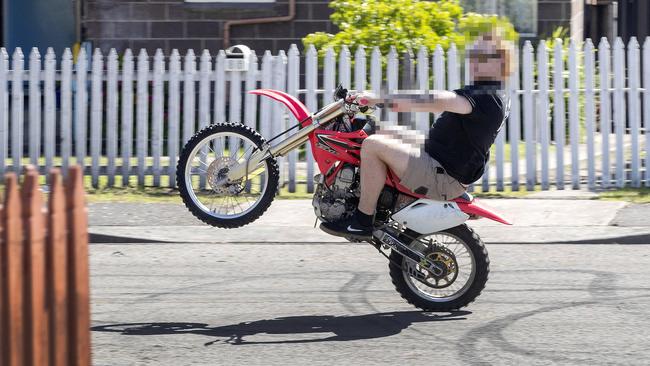
HOONS TARGET COMMUNITY AREAS
Mockridge Road in Clarendon Vale is home to a primary school, the community neighbourhood house and an early learning centre – and it’s a hub for hoons.
Clarendon Vale Neighbourhood Centre manager Kristy Leishman described the street’s hooning problem as “an extremely messy situation” which has left residents afraid to leave their homes.
“We have some that go up and down past our centre and that’s a daily occurrence, mostly motorbikes. We do have cars doing burnouts and things which is just absolutely ridiculous,” Ms Leishman said.
“When we see the bikes they’re on the back wheel, that sort of thing, no safety gear, no anything.
“We encourage people to report it every time they see it.”
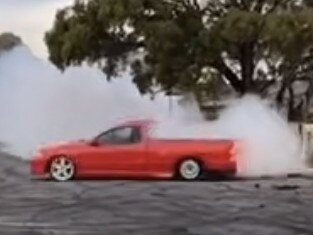
Ms Leishman said the hoons leave rubber and wire strewn across the road outside Clarendon Vale Primary School, forcing local students to walk through the debris.
“One of our major roads is actually up the back where the school is … the other night they actually shut the road off and went for hours. So that’s a regular occurrence – burnouts and that sort of thing – happens every night.
“You can ring (the police), you can report it and you don’t see anybody show up. Or if they do, what do they do? Because they can’t chase them if they’re on bikes and that sort of thing.”
Ms Leishman said the Neighbourhood House was working with the local council to implement strategies to reduce hooning.
It also has a range of programs aimed at educating and mentoring motorists around driver safety.
“Unfortunately, our community feels a little bit let down because they ring and nothing happens, but we need to remind them that if they keep reporting, it actually shows that there’s a larger issue.”
INTIMIDATION TACTICS
When The Mercury visited Clarendon Vale to investigate hooning in person, it was clear we weren’t welcome.
We saw spirals of burnout marks on the road and spotted multiple unregistered cars sitting in driveways.
After photographing fresh tyre marks and snapping a picture of a young man illegally speeding up a local street on an unregistered trail bike, we were immediately confronted with intimidation tactics.
The young man – who was not wearing a helmet – rushed up to us, standing inches away and demanding we delete the images of him.
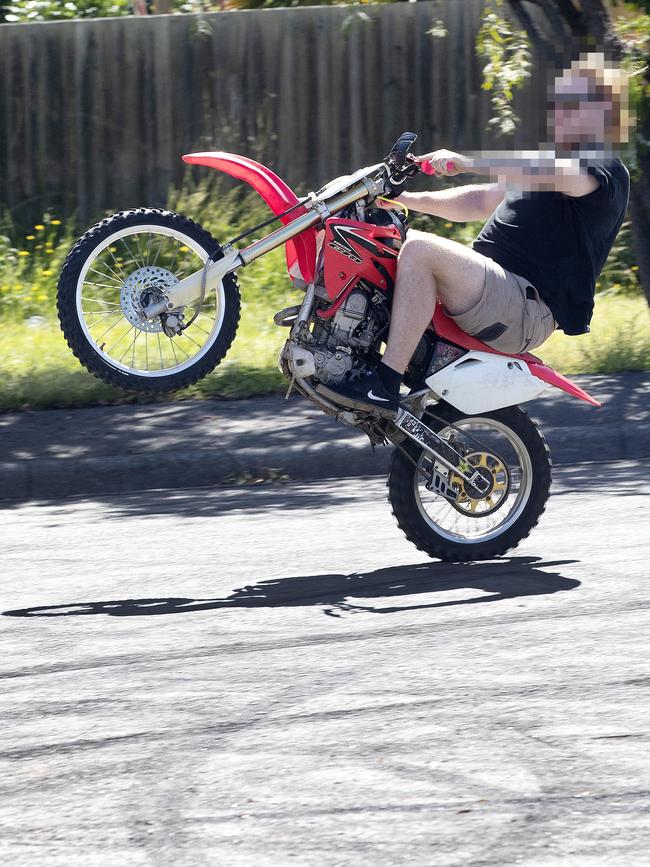
More than six feet tall and covered in tattoos, he was angry we saw him revving his bike and was clearly trying to intimidate us.
He yelled for a few minutes and eventually walked away, but not before a group of young men pulled up in an old red Mazda, beers in hand.
They revved for a few minutes, the driver leering at us from behind the car window, blocking us in the street.
We felt cornered and helpless.
I was a moment away from calling the police.
After some more revving and a loud “bang” from the car’s exhaust pipe, they sped off and we managed to drive away.
No wonder local residents are afraid to report these thugs.
CAR IMPOUNDED FOR HOONING IN BRIDGEWATER
A hoon driver was arrested in Bridgewater, north of Hobart, after being caught driving recklessly on Monday night.
Police impounded the driver’s maroon Ford Falcon and issued it with a defect notice after it was spotted hooning at Greenbanks Industrial Estate.

Police allege the vehicle was being driven recklessly, noting its noisy exhaust, poor rear tyre conditions and leaking engine.
Investigators are gathering evidence to charge the driver with multiple traffic offences, including unnecessary executionof speed, acceleration or sustained loss of traction.
Inspector Philippa Burk said complaints about hooning and dangerous driving in the estate and surrounding Tea Tree area were common.
“Driving behaviour such as hooning is illegal, dangerous and interrupts the peace and quiet of citizens,” Ms Burk said.
“It can also easily cause a serious crash putting people’s lives at risk.
“Offenders can expect to be arrested and have their vehicle seized and confiscated.”
Ms Burk said hooning left roads in “a bad condition with tyre marks and debris everywhere”.
Police will be patrolling known hooning hot spots where dangerous driving is common.
Bridgewater had the highest number of reported hooning incidents between July 2021 and April 2022, according to police.



